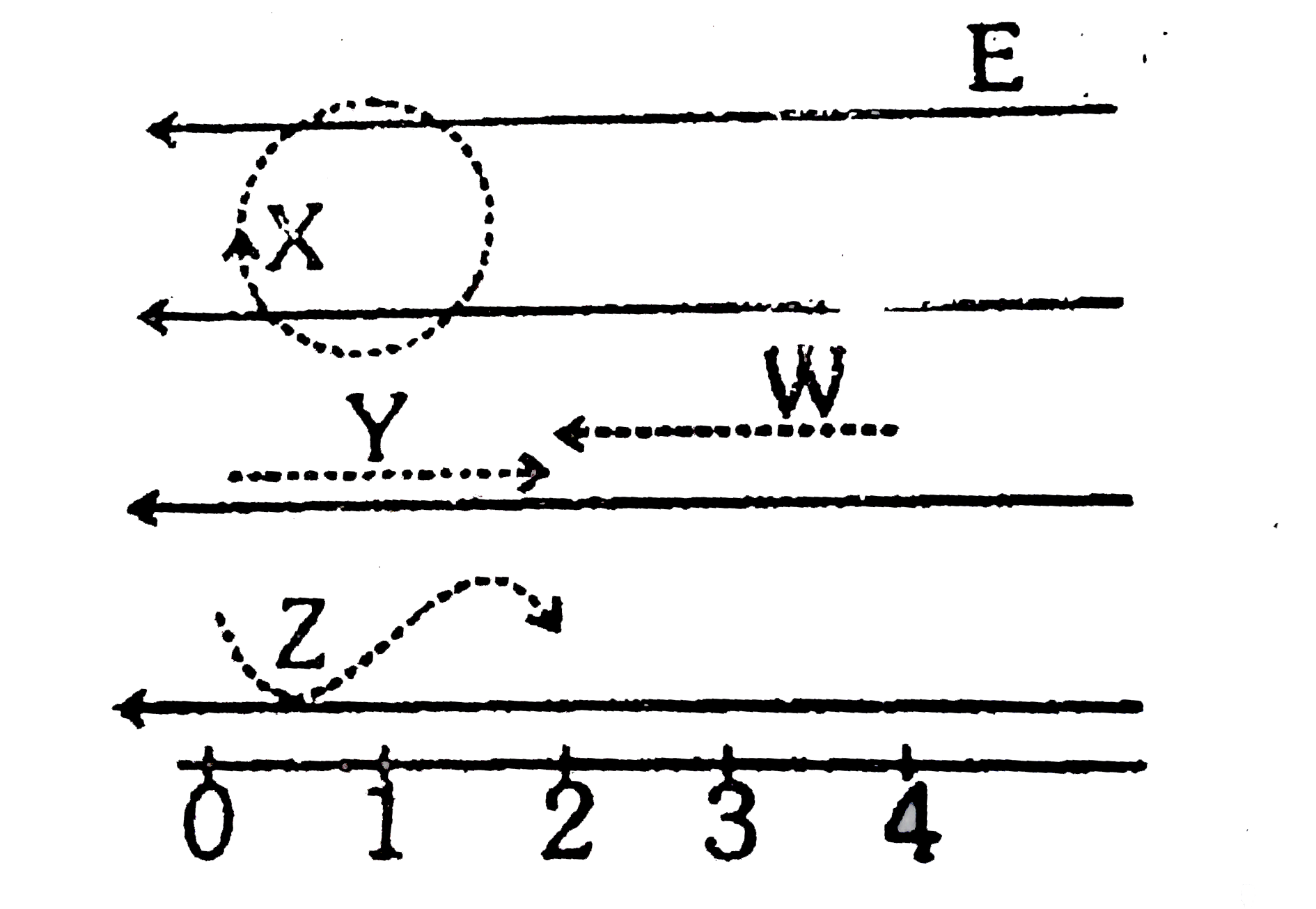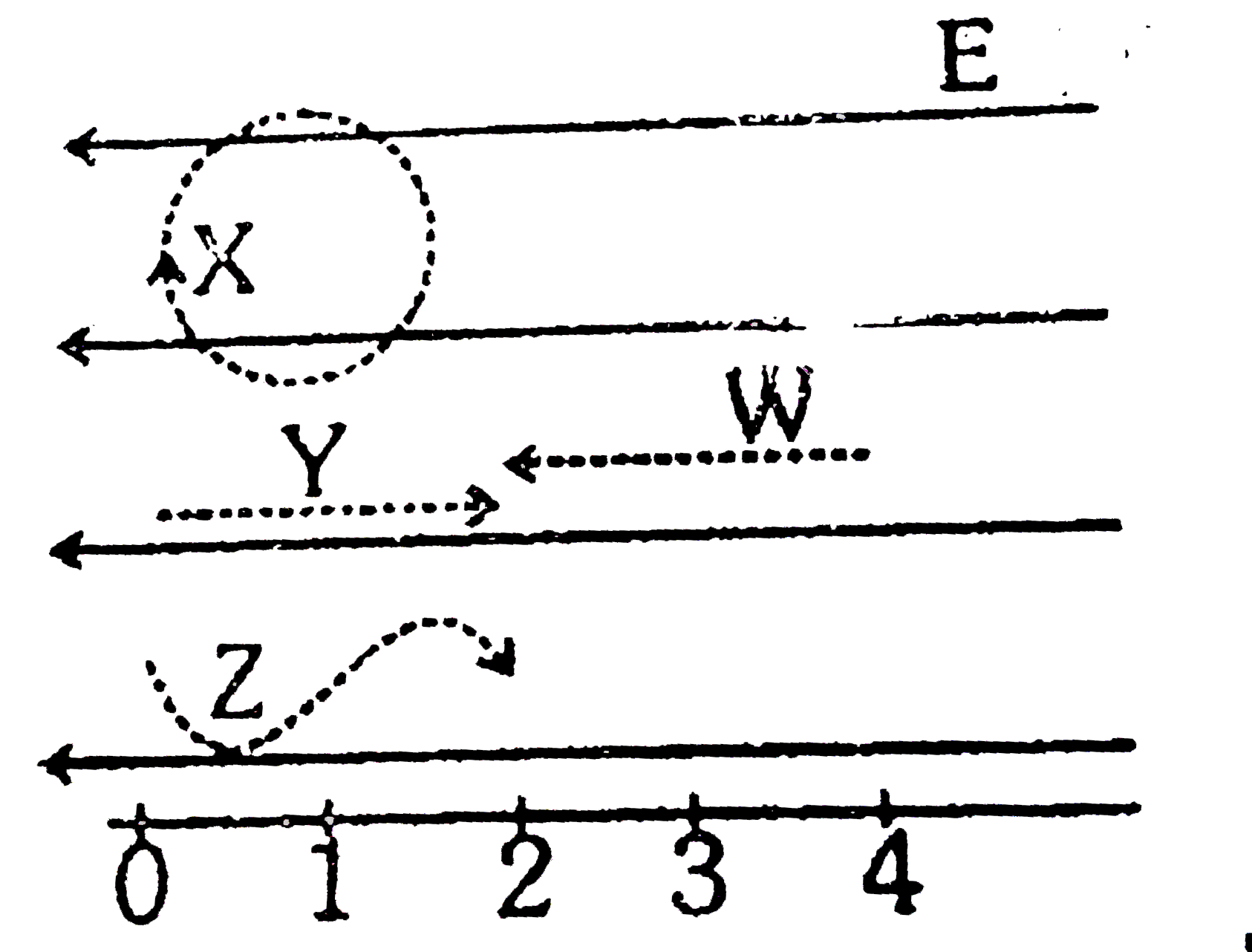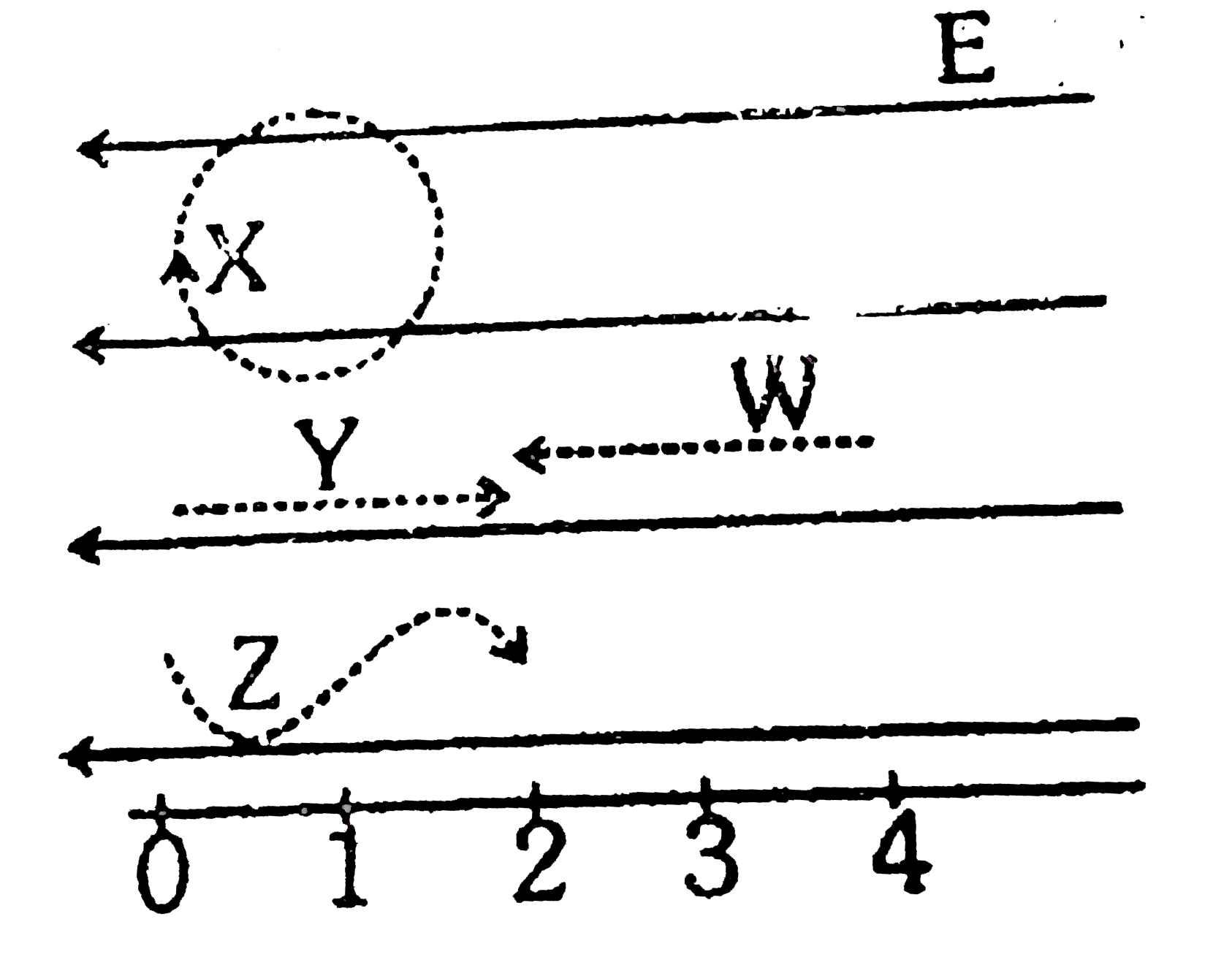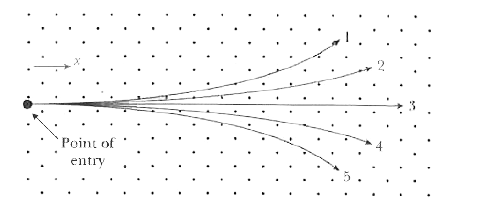In the diagram (given below), the broken lines represent the paths followed by particles W, X, Y and Z respectively through the contant field E. The number below the field represent meters.

Suppose particle Z has a charge of , and is begins and end at rest. If E is , how much work is done on particle Z
The correct Answer is:B
Topper's Solved these Questions
- BOOK - ALLENCHAPTER - MISCELLANEOUSEXERCISE - Comprehension 92videos
MISCELLANEOUS
- BOOK - ALLENCHAPTER - MISCELLANEOUSEXERCISE - Exersice-04[A]34videos
MISCELLANEOUS
- BOOK - ALLENCHAPTER - MISCELLANEOUSEXERCISE - Comprehension 73videos
MISCELLANEOUS
- BOOK - ALLENCHAPTER - KINEMATICS (MOTION ALONG A STRAIGHT LINE AND MOTION IN A PLANE)EXERCISE - BEGINNER S BOX-78videos
KINEMATICS (MOTION ALONG A STRAIGHT LINE AND MOTION IN A PLANE)
- BOOK - ALLENCHAPTER - PHYSICAL WORLD, UNITS AND DIMENSIONS & ERRORS IN MEASUREMENT EXERCISE - EXERCISE-IV8videos
PHYSICAL WORLD, UNITS AND DIMENSIONS & ERRORS IN MEASUREMENT
Similar Questions
Answer the following:
Three invisible radiations X, Y and Z are passed through on electric field. X was found to be undeviated. Y deviated towards positive end of the electric field and Z towards negative. Identify the particles present in X, Y and Z. What is e/m ratio for X?View SolutionAn atom of element is represented as .ZCA. After the emission of a β-particle , another element Y is formed. Represent Y with atomic number and mass number.
View Solution
Knowledge Check
- Question 1 - Select One
In the diagram (given below) the broken lines represent the paths followed by particles W,X, Y and Z respectively through the constant field E. The numbers below the field represents meters.
If the particles begin and end at rest, and all are positively charged, the same amount of work was done on which particles.AW and ZBW, Y and ZCY and ZDW, X, Y and Z - Question 2 - Select One
In the diagram (given below), the broken lines represent the paths followed by particles W, X, Y and Z respectively through the contant field E. The number below the field represent meters.

Suppose that the field strength E is 10N/C and particle Y has a charge of −10C. When is the mass of particle YA1 kgB2 kgC3 kgD4 kg - Question 3 - Select One
In the diagram (given below), the broken lines represent the paths followed by particles W, X, Y and Z respectively through the contant field E. The number below the field represent meters.

If the particles are positively charged, which particles increased their electric potential energy
constant, none of the particle increased their electric potential energyAX and ZBY and ZCW, X, Y and ZDsince the electric field is
Represent the following inequations on number line
(a) x≤3
(b) y≥−1
(c) z<−4View SolutionLet the complex numbers z1, z2 and z3 represent the vertices A, B and C of a triangle ABC respectively, which is inscribed in the circle of radius unity and centre at origin.The internal bisector of the angle A meets the circumcircle again at the point D, Which is represented by the complex number z4 and altitude from A to BC meets the circumcircle at E. given by z5. Then arg(z2z3z24) is equal to
View SolutionSome letters are given below in the first line and numbers are given below them in the second line. Numbers are the codes for the alphabets and vice-versa. Choose the correct number-code for the given set of alphabets.
C W E A Z X J Y K L
5 9 5 7 4 8 1 0 2 6
J W X C L ZView SolutionThe charge on a particle Y is double the charge on particle X. These two particles X and Y after being accelerated through the same potential difference enter a region of uniform magnetic field and describe circular paths of radii R1 and R2 respectively. The ratio of the mass of X to that of Y is
View SolutionThe given figure shows five particles are shot from left into a region that contains a uniform electric field. The numbered lines shows the paths taken by the five particles. A negatively charged particle with a charge -3Q follows path 2 while it moves through this field. Do not consider any effects due to gravity.

Which path would be followed by a helium atom (an electrically neutral particle) ?View Solution

